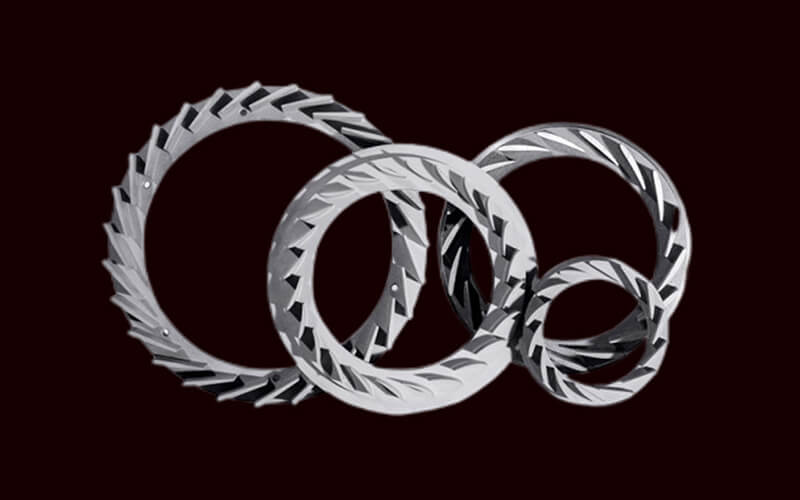The superalloy material for the direct preparation of parts by the casting method. According to the alloy matrix composition, it can be divided into three types: iron-based casting superalloy, nickel-based casting superalloy, and drill-based casting superalloy. According to the crystallization method, it can be divided into four types: polycrystalline casting superalloy, directional solidification casting superalloy, directional eutectic casting superalloy, and single crystal casting superalloy. The majority of cast superalloys are polycrystalline cast superalloys.
Features
Cast superalloys have the following characteristics:
(1) The degree of alloying is high. The γ’ strengthening phase (see the intermetallic compound phase of the superalloy material) forms the elements aluminum, titanium, niobium, tantalum, etc. up to 16%, and also adds a certain amount of solid solution strengthening elements tungsten and molybdenum.
(2) The chromium content is relatively low, most of which is below 10%.
(3) The grain boundary strengthening element boron content is all O. 01% or more.
(4) Most of the carbon content exceeds o. 1% and the carbon content of cobalt-based cast superalloys is as high as 1%.
(5) Some cast superalloys add 1% to 2% hafnium to improve medium-temperature plasticity and increase creep strength.
Microstructural features
In the microstructure of the cast superalloy (see the microstructure of the superalloy material), in addition to the γ’ phase, there is also a γ-γ’ eutectic phase, and there are more primary carbide phases, which are distributed along with the interdendritic crystals. Some alloys There is also M3B2 boride precipitation. The heat treatment process of cast superalloys is relatively simple, and some can be used even without heat treatment.
Parts production
For casting superalloys, master alloys are generally smelted in large vacuum induction furnaces, shell shapes are made by lost wax precision molding, and then remelted and cast into parts in small vacuum induction furnaces.
Defects and Elimination
There will inevitably be some microscopic porosity in castings, which can be reduced or eliminated by hot isostatic pressing to increase the reliability of the parts. The grain size of cast superalloy parts is relatively large, which is detrimental to fatigue performance. The surface grain refinement method is usually used to obtain fine grains on the surface of the part.
Direction of development
The use of directional solidification technology can produce columnar crystal blades without transverse grain boundaries or single-crystal blades with complete elimination of grain boundaries, which can double the high-temperature fatigue life and lasting strength, which is the current development direction of casting superalloys.
Similar Articles:
Recent Articles:
- Casting technical requirements and analysis of common problems of steel castings
- What is the role of Mo in high manganese steel casting production?
- What effect does carbon have on cast steel and iron during smelting?
- Prevention and Analysis of Stainless Steel Casting Defects
- Causes of cracks in steel castings

